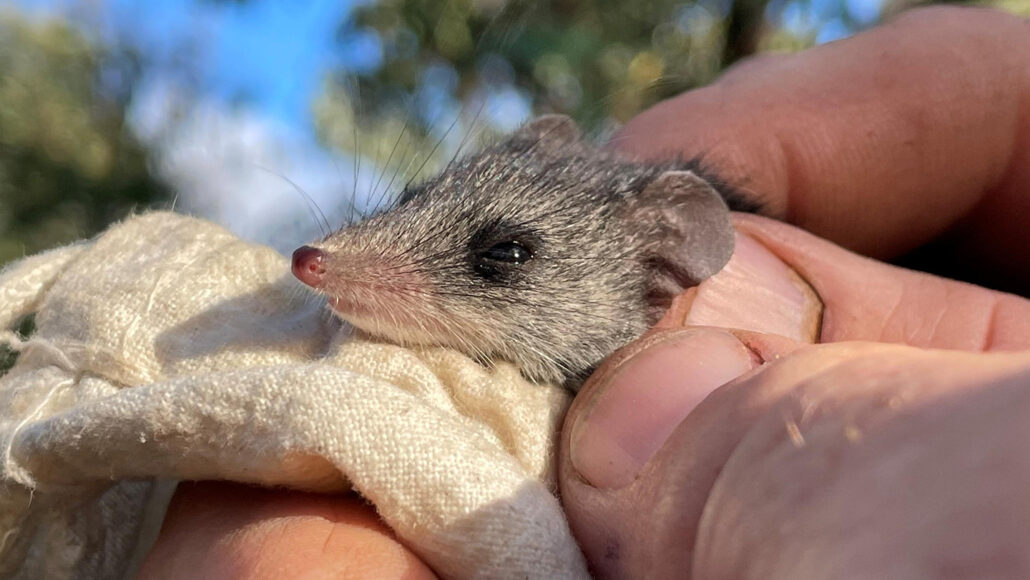borough: (in New York City) One of five parts of the city: Brooklyn, the Bronx, Manhattan, Queens and Staten Island. Each has a limited degree of self-government, and the borders of all but the Bronx were originally designated by the English in 1683 as separate New York counties. (in Alaska) The equivalent of a state county (or in Louisiana, a parish). Alaska is divided into 18 boroughs. It’s North Slope borough, for instance, runs along the upper top of the state, adjacent to the Arctic Ocean.
culling: The act of selecting — often with the goal of removing — a particular thing from some group or site. Sometimes it can refer to the selective slaughtering of some unwanted or undesired species.
dunnart: Any of some 19 species of small, nocturnal Australian marsupials. Each is roughly the size of a mouse and carnivorous, usually feeding on eating insects, spiders, small reptiles or amphibians. Invasive foxes — and, secondarily, feral cats — are their primary predators.
extinction: The permanent loss of a species, family or larger group of organisms.
field: An area of study, as in: Her field of research is biology. Also a term to describe a real-world environment in which some research is conducted, such as at sea, in a forest, on a mountaintop or on a city street. It is the opposite of an artificial setting, such as a research laboratory.
gut: An informal term for the gastrointestinal tract, especially the intestines.
habitat: The area or natural environment in which an animal or plant normally lives, such as a desert, coral reef or freshwater lake. A habitat can be home to thousands of different species.
invasive species: (also known as aliens) A species that is found living, and often thriving, in an ecosystem other than the one in which it evolved. Some invasive species were deliberately introduced to an environment, such as a prized flower, tree or shrub. Some entered an environment unintentionally, such as a fungus whose spores traveled between continents on the winds. Still others may have escaped from a controlled environment, such as an aquarium or laboratory, and begun growing in the wild. What all of these so-called invasives have in common is that their populations are becoming established in a new environment, often in the absence of natural factors that would control their spread. Invasive species can be plants, animals or disease-causing pathogens. Many have the potential to cause harm to wildlife, people or to a region’s economy.
mammal: A warm-blooded animal distinguished by the possession of hair or fur, the secretion of milk by females for feeding their young, and (typically) the bearing of live young.
marsupial: A type of mammal that carries its young for a period after birth in external pouches. There the developing babies have access to their mother’s nipples — and milk. Most of these species evolved in Australian and have especially long hind-legs. Examples of marsupials include kangaroos, opossums and koalas.
native: Associated with a particular location; native plants and animals have been found in a particular location since recorded history began. These species also tend to have developed within a region, occurring there naturally (not because they were planted or moved there by people). Most are particularly well adapted to their environment.
population: (in biology) A group of individuals (belonging to the same species) that lives in a given area.
predator: (adjective: predatory) A creature that preys on other animals for most or all of its food.
risk: The chance or mathematical likelihood that some bad thing might happen. For instance, exposure to radiation poses a risk of cancer. Or the hazard — or peril — itself. (For instance: Among cancer risks that the people faced were radiation and drinking water tainted with arsenic.)
species: A group of similar organisms capable of producing offspring that can survive and reproduce.
threatened: (in conservation biology) A designation given to species that are at high risk of going extinct. These species are not as imperiled however, as those considered “endangered.”
veterinary: Having to do with animal medicine or health care.








